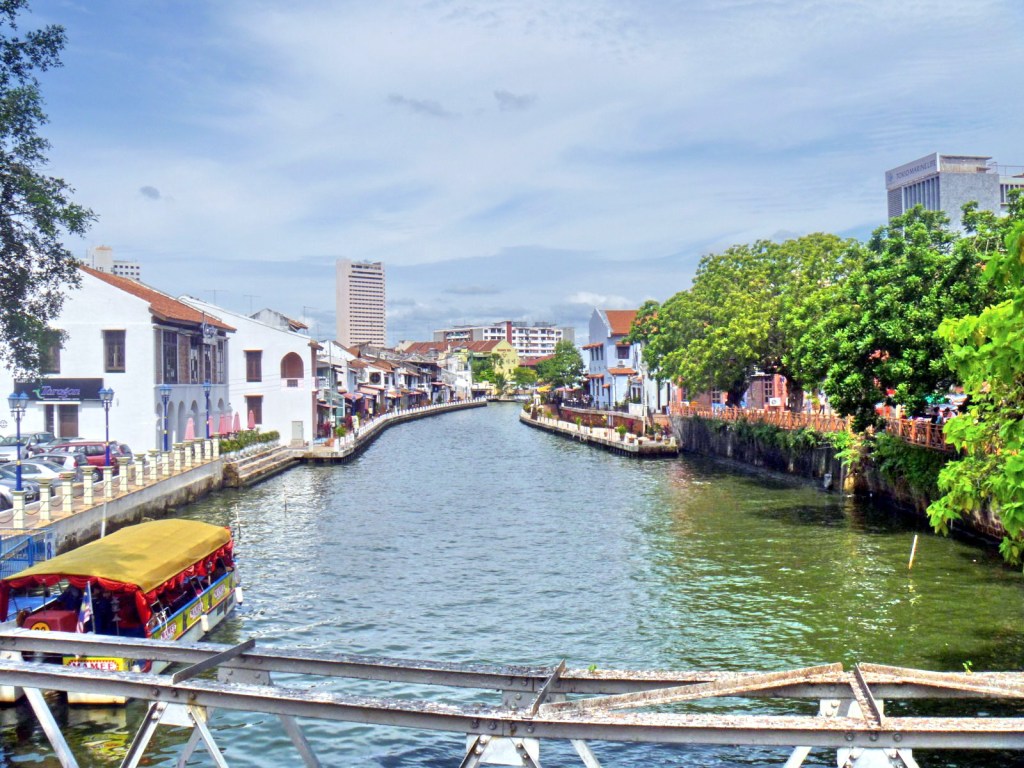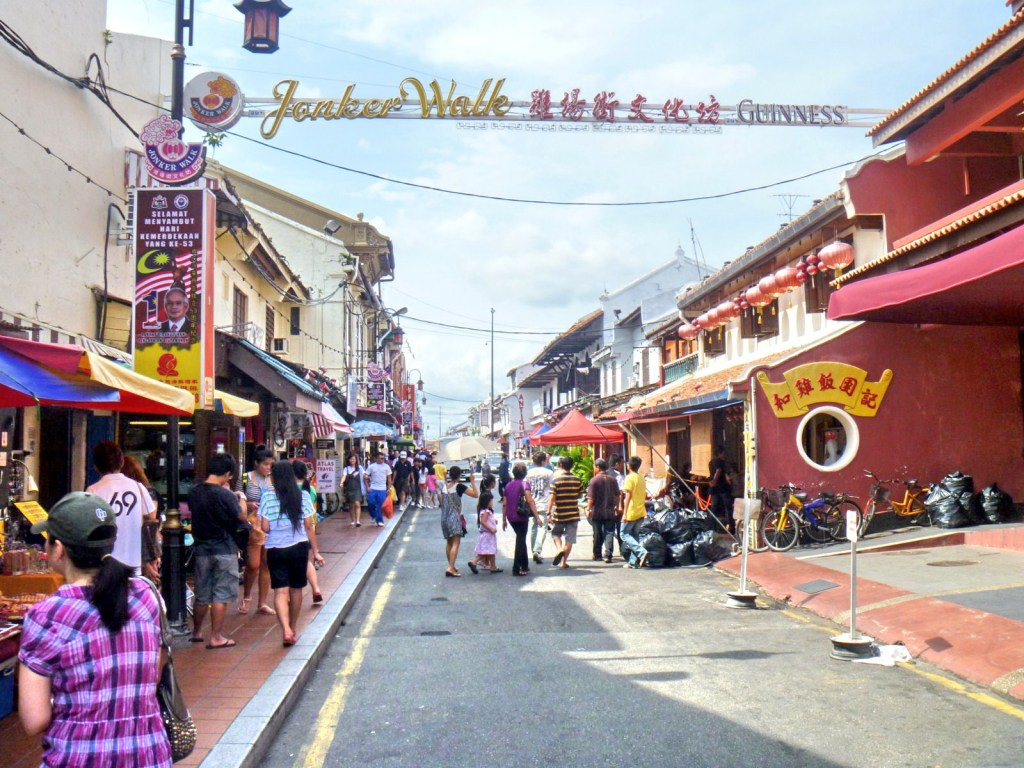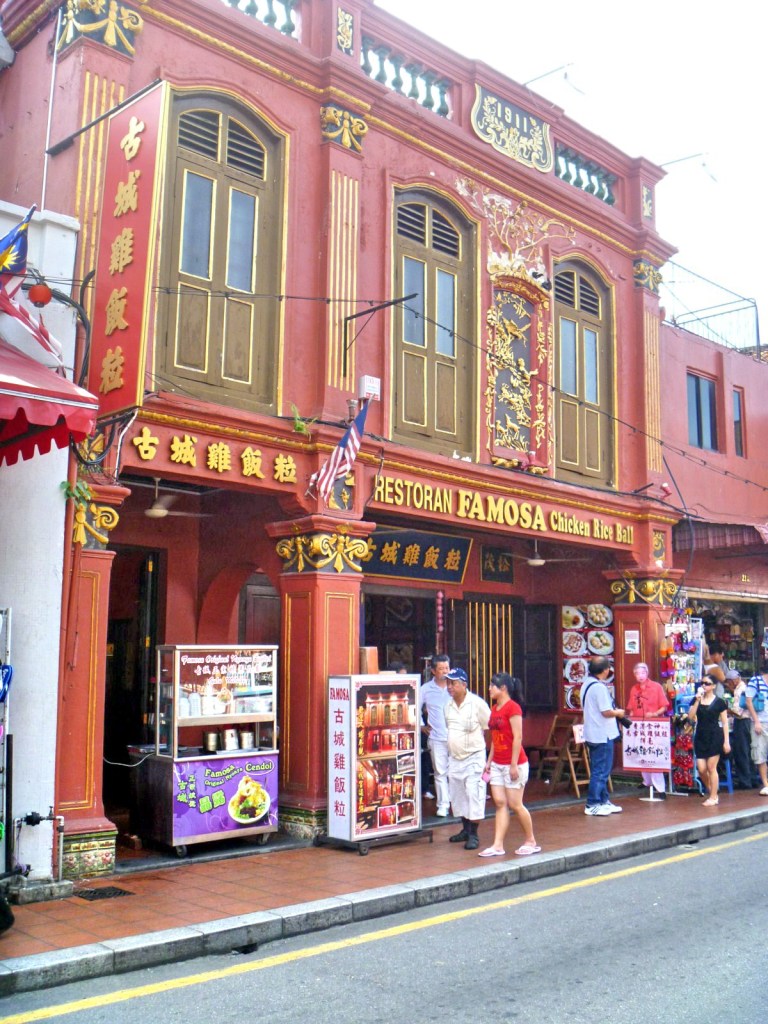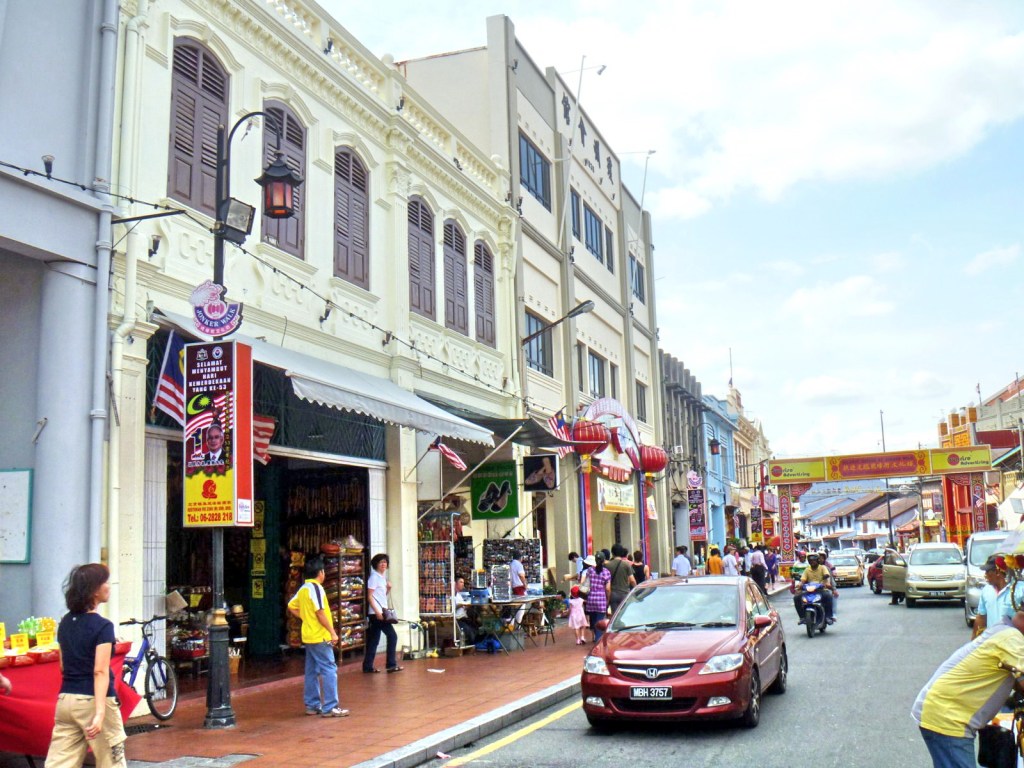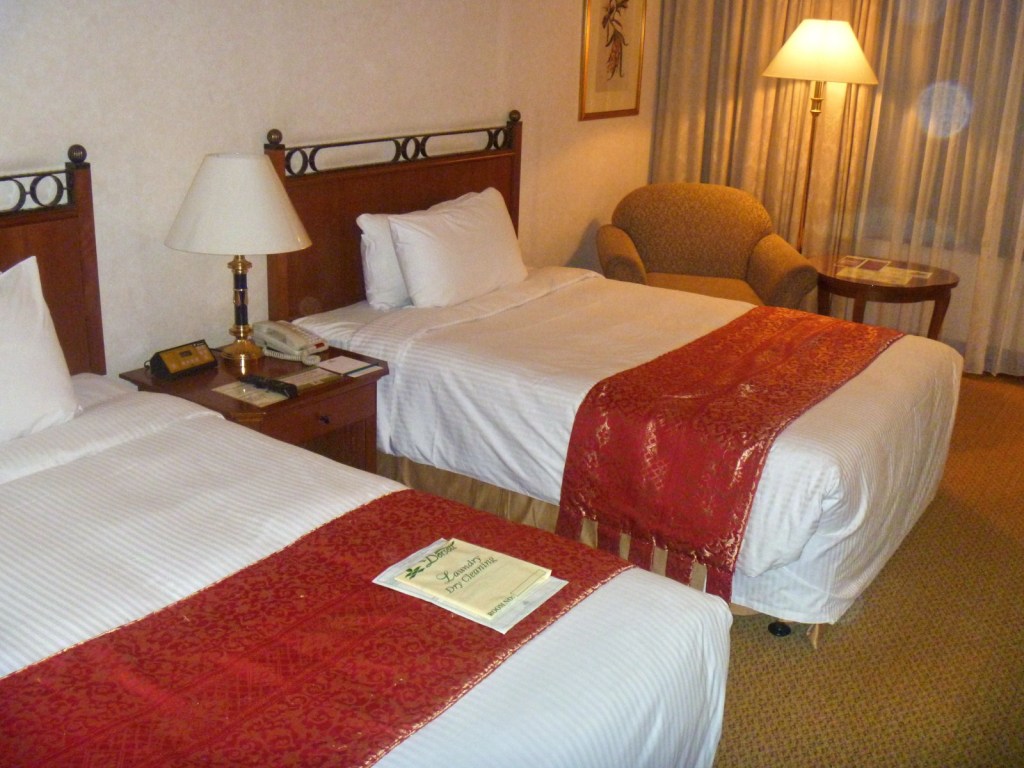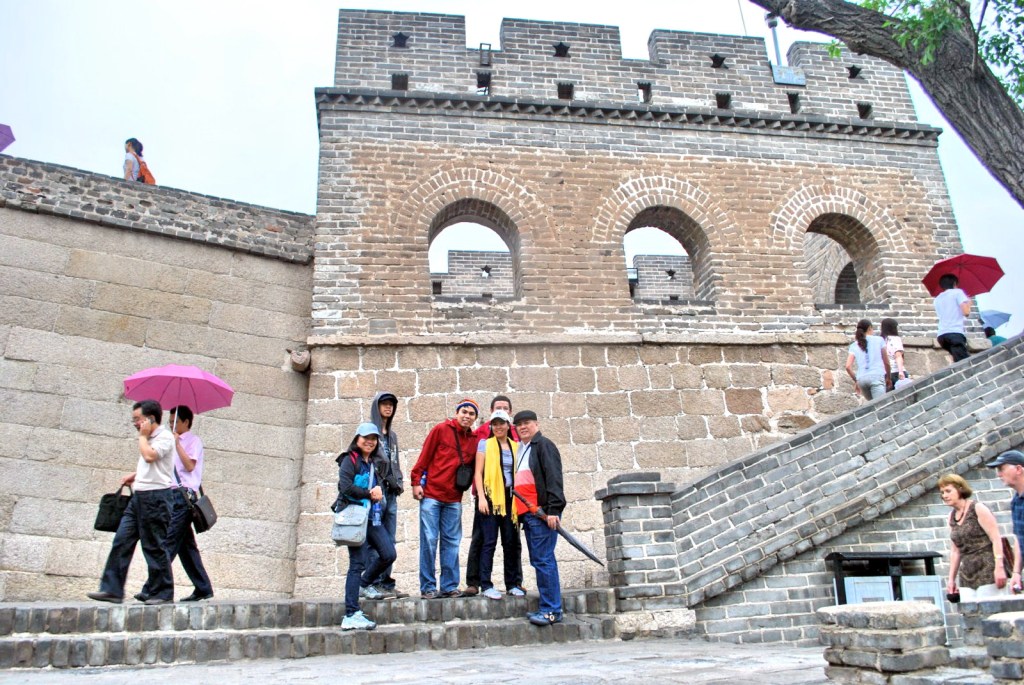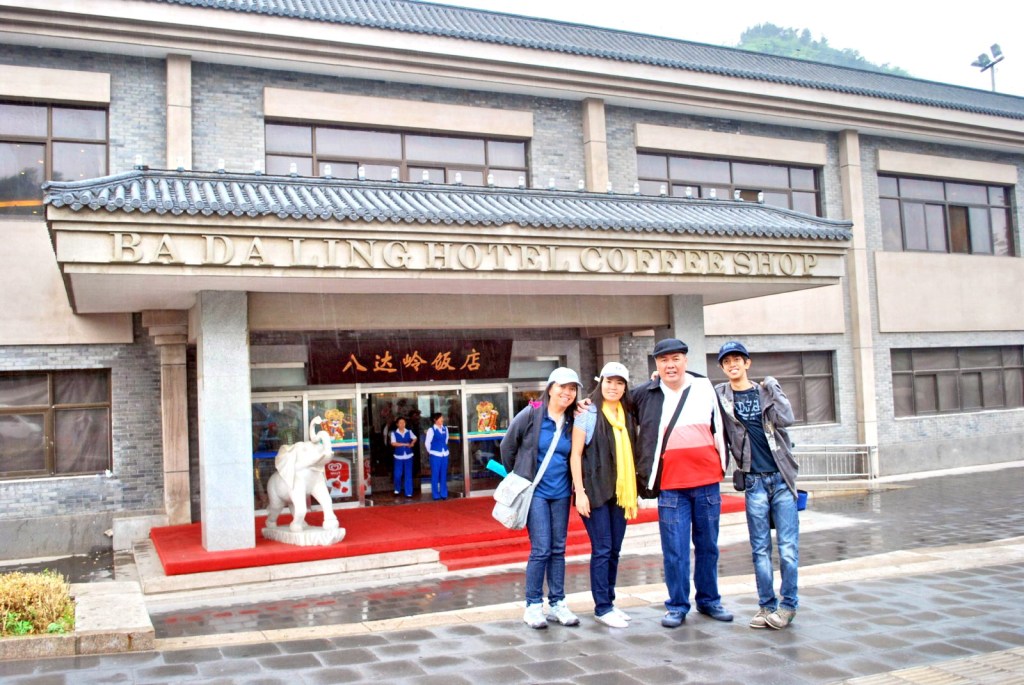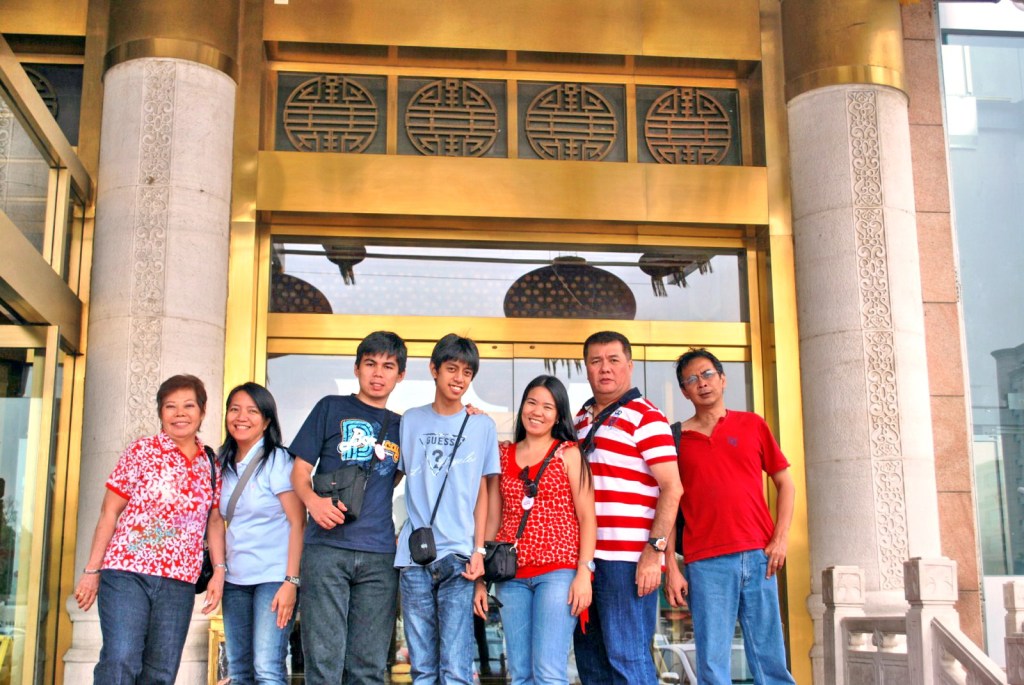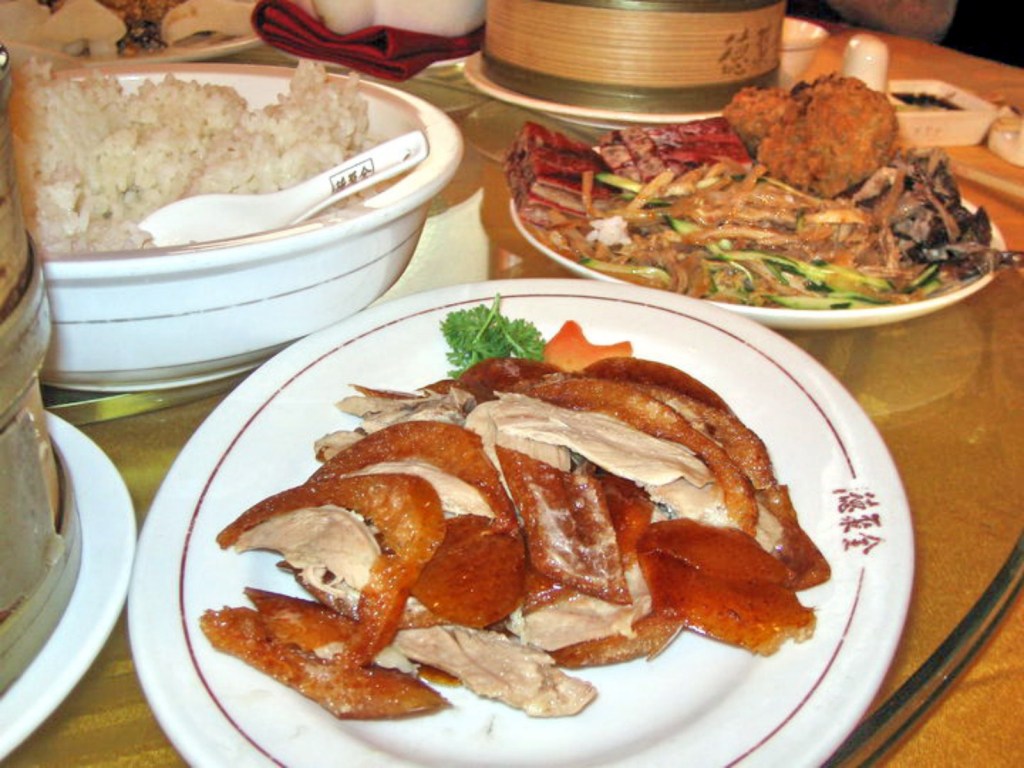| Executive Suite bedroom at Balay de Blas |
Before everything else, we were allowed to freshen up at its executive suite. The room’s furnishings were all period pieces and one table had a Singer sewing machine base, same as the those in Cafe Herencia in Paoay, where Sammy is a co-owner.
Check out “Restaurant Review: Cafe Herencia“
| Spacious living room (take note of the Singer sewing machine table at center) |
Sammy also owns Saramsam Ylocano Restaurant and guests can place their orders through the hotel. The restaurant offers Ilocano dishes (bagnet, igado, poque-poque, dinakdak, pinakbet, etc.) as well as avant-garde versions of the traditional Ilocano fare fused with Western cuisine such as Saramsam pasta, poque-poque pizza and dinuguan pizza. Some of these dishes were served to us during our cocktails and videoke night which was emceed by media colleagues Ron Rivera and Kenneth del Rosario.
Ilocos Rosewell Hotel and Restaurant: Brgy 1, San Francisco National Highway, San Nicolas, Ilocos Norte. Tel: (077) 670-6528 and 781-2122. Fax: (077) 781-3700. Website: www.ilocosrosewellhotel.com.
Balay da Blas Pensionne House: 10 Giron St., Brgy. 7-B, Laoag City, Ilocos Norte. Tel: (077) 770-4389. Email: balaydablas@yahoo.com. Website: www.balaydablas.com.
Saramsam Ylocano Restaurant: N. Corpuz Bldg., Rizal cor. Hizon St., Brgy. 7-A, Laoag City, Ilocos Norte. Tel: (077) 771-5825. Email: balaydablas@yahoo.com.


.jpg)
.jpg)

